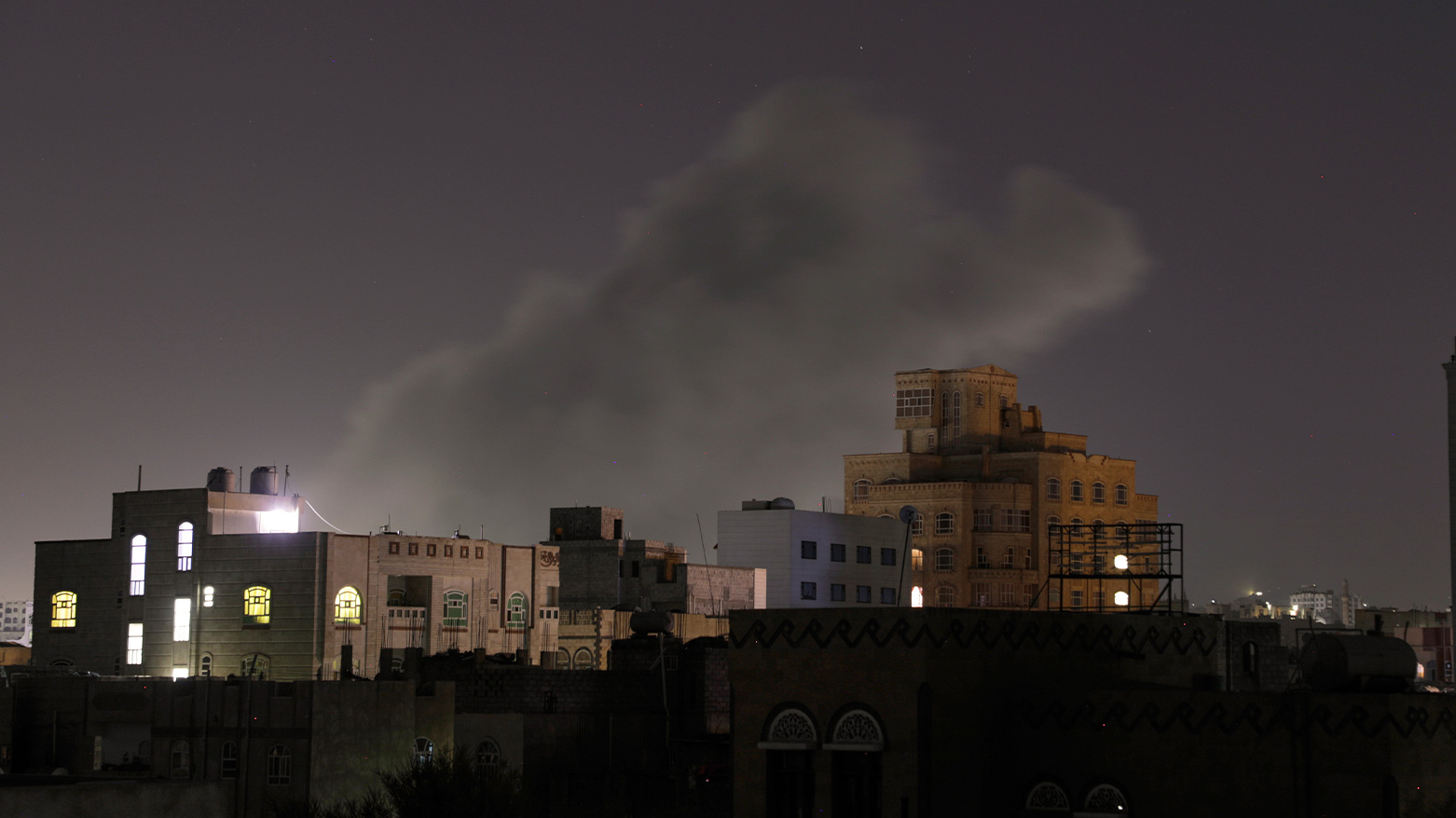Houthis: U.S. Strikes Hit Sanaa, Key Coastal City
The strikes came less than 48 hours after a deadly assault on the Ras Isa oil terminal that killed at least 74 people and injured over 170 others, according to the Houthi-controlled Health Ministry.

By Kamaran Aziz
ERBIL (Kurdistan24) — The Trump administration has escalated its bombing campaign against the Iran-backed Houthi militia in Yemen, launching a new wave of airstrikes on Saturday targeting the capital Sanaa and the strategic Red Sea port city of Hodeida.
The strikes came less than 48 hours after a deadly assault on the Ras Isa oil terminal that killed at least 74 people and injured over 170 others, according to the Houthi-controlled Health Ministry — the deadliest attack since the U.S. campaign began in mid-March.
According to reports by The New York Times and The Washington Post, the latest strikes hit Hodeida’s airport and port infrastructure as well as multiple sites in Sanaa. While there were no immediate reports of casualties from Saturday’s attacks, the repeated targeting of civilian infrastructure has triggered alarm among humanitarian organizations and international observers.
The U.S. Central Command (CENTCOM), which oversees military operations in the region, confirmed that it had struck fuel facilities used by the Houthis to finance and support their military operations. "This strike was not intended to harm the people of Yemen," CENTCOM said, emphasizing that the goal was to deprive the Houthis of illegal revenue and undermine their ability to sustain attacks in the region.
Thursday’s airstrike on Ras Isa, located in Hodeida province, devastated a major fuel depot. The port is a crucial entry point for humanitarian aid and supplies for northern Yemen, where over 20 million people rely on international assistance. According to The Washington Post, the U.S. military justified the bombing by stating that the Houthis had weaponized the fuel shipments to sustain their operations and control civilian populations. The Houthis, however, claim the strikes are indiscriminate and harm civilians more than militants.
The New York Times reported that despite the severity of the airstrikes, the Houthis have not been deterred. Within hours of the Ras Isa bombing, they launched another missile at Israel, prompting air raid sirens across central Israel. The Houthis have repeatedly stated that their attacks on Israel and international shipping in the Red Sea are in solidarity with Palestinians in Gaza.
In an official statement on Saturday, United Nations Secretary-General António Guterres expressed deep concern over both the U.S. strikes and the Houthi attacks, emphasizing that international humanitarian law must be upheld. “He appeals to all to respect and protect civilians as well as civilian infrastructure,” said UN spokesperson Stéphane Dujarric.
According to the Wall Street Journal, the Houthi militia, formally designated as a foreign terrorist organization by the Trump administration, has increasingly turned to China and Russia to bolster its military capabilities. U.S. officials allege that Chinese satellite companies have provided the group with imagery used to target U.S. and allied interests, while Houthi envoys have pursued weapons deals in Moscow. This development suggests a strategic shift as the group seeks to diversify its sources of military support amid declining aid from Iran.
The Wall Street Journal also revealed that intercepted shipments from China included drone components and hydrogen fuel cells labeled as oxygen canisters to avoid detection. Arms experts say these upgrades make the Houthis’ drones more lethal and difficult to intercept, signaling a dangerous evolution in the group's military technology.
More than 190 people have been killed since the U.S. campaign began, according to Houthi officials. However, U.S. military officials have provided little information about the toll or operational details. Pentagon sources, cited by The New York Times, privately acknowledge that the airstrikes have had limited success in dismantling the Houthis’ underground military infrastructure.
The humanitarian fallout has been severe. Aid agencies warn that with ports under fire and fuel shortages mounting, the civilian population is facing catastrophic conditions. Yemen already hosts one of the world’s largest humanitarian crises, with 80 percent of the population in need of urgent assistance.
The Trump administration has defended the campaign as a necessary measure to secure international shipping lanes and protect regional allies, particularly Israel. However, analysts warn that the strikes risk deepening instability and drawing the U.S. further into regional conflicts.
As the air campaign continues with no clear resolution in sight, the geopolitical entanglements surrounding the Houthis — including their ties to China, Russia, and Iran — signal a broader realignment in the Middle East. Meanwhile, Yemen’s suffering civilian population bears the brunt of escalating international confrontation.
